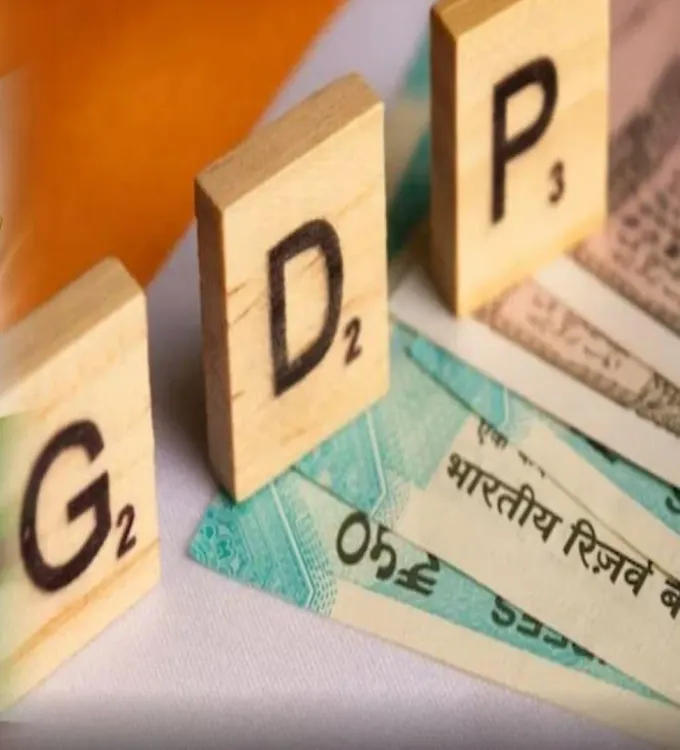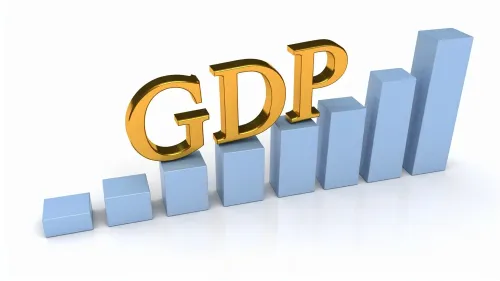India's GDP Growth Forecasts Steady at 6.5% for 2025-26: Crisil

Synopsis
Key Takeaways
- India's GDP growth projected at 6.5% for fiscal 2025-2026.
- Private consumption recovery driven by healthy agricultural output and lower food inflation.
- Tax benefits and increased government spending expected to support consumption.
- RBI anticipated to cut repo rates by 50-75 bps.
- Investment growth reliant on private corporate expenditure.
New Delhi, March 3 (NationPress) India’s GDP growth is projected to remain robust at 6.5 percent for the fiscal year 2025-2026, aided by the expectation of a normal monsoon season and stable commodity prices.
According to a report by Crisil released on Monday, private consumption is anticipated to further rebound, while the growth of investments will rely heavily on private capital expenditure.
The recovery in private consumption is supported by expectations of strong agricultural output and decreasing food inflation. The report suggests that lower food inflation will free up household budgets for more discretionary spending.
Additionally, the tax incentives introduced in the Union Budget for 2025-2026 and heightened funding for vital asset and job-generating initiatives are likely to bolster consumption.
Moreover, the Reserve Bank of India (RBI) is expected to ease monetary policy, which should further encourage discretionary spending.
The Crisil report also forecasts that the RBI's Monetary Policy Committee (MPC) will potentially lower the repo rate by 50-75 basis points during fiscal 2026.
Recent liquidity-enhancing actions by the central bank and relaxed regulations for non-banking financial companies are projected to extend the benefits of a more accommodating monetary policy to the wider economy.
The report emphasizes that investment growth is contingent upon a consistent uptick in private corporate investment, particularly as the government adjusts capital expenditure to meet its fiscal deficit objectives for the forthcoming year.
However, the report cautions that risks to the growth outlook are skewed towards the downside, primarily due to the heightened uncertainty stemming from the US-led tariff conflicts.
With domestic private consumption anticipated to remain steady, imports are expected to be robust in fiscal 2026, though export growth might be limited due to possible retaliatory tariffs from the US.
The rising global trade uncertainty might also result in increased imports from China due to shifts in trade patterns.
According to official statistics, the GDP growth for 2024-25 is projected at 6.5 percent, a decline from 9.2 percent in the previous fiscal year. Nevertheless, this growth rate is close to the pre-pandemic average of 6.6 percent during the decade from 2011 to 2020, allowing India to maintain its status as the fastest growing major economy.
The GDP is expected to accelerate further, reaching 7.6 percent in the fourth quarter, contributing to an overall growth of 6.5 percent for the current fiscal year. Real GDP growth has already risen to 6.2 percent year-on-year in the third quarter of this fiscal, up from 5.6 percent.
Growth in agriculture has seen an increase, supported by a normal monsoon, with a rate of 5.6 percent compared to 4.1 percent in the previous quarter, while the services sector has maintained a robust growth rate of 7.4 percent.
Private final consumption expenditure has surged to 6.9 percent in the third quarter from 5.9 percent previously. The festive and wedding season likely fueled demand during this period. Government final consumption expenditure also increased to 8.3 percent from 3.8 percent.
Exports experienced a significant rise to 10.4 percent from 2.5 percent, primarily driven by the services sector, while imports continued to decline (-1.1 percent compared to -2.5 percent).
The manufacturing sector showed broad-based growth in the third quarter, with the Index of Industrial Production (IIP) data indicating improved performance in both infrastructure and construction goods as well as consumer-oriented sectors compared to the previous quarter. Growth in merchandise exports has also rebounded following a decline in the previous quarter.









